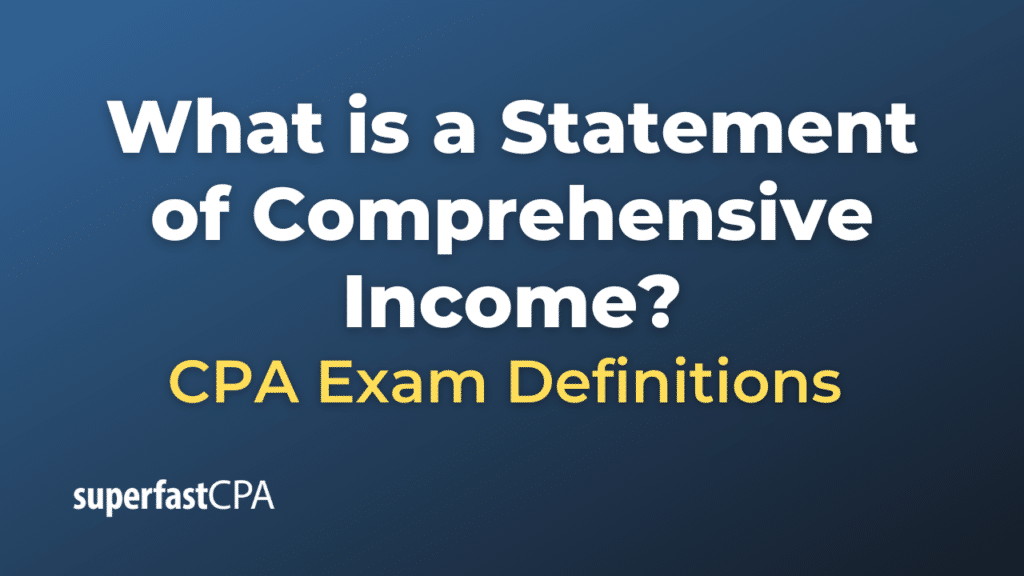Statement of Comprehensive Income
The Statement of Comprehensive Income is one of the financial statements that companies produce to present their performance over a specific period. It combines the traditional income statement (which displays the results of operations, such as revenue, expenses, and net profit or loss) with other comprehensive income (OCI) to display a comprehensive view of the total gains and losses experienced by a company during a period.
Other Comprehensive Income (OCI) includes income and expenses, gains and losses, that are excluded from net profit or net loss for the period, as they are not realized. These items are excluded from net profit or loss primarily because they are considered irregular or non-recurring or because of specific accounting rules that exclude them from the income statement.
Examples of items that might be classified under OCI include:
- Unrealized gains and losses on available-for-sale financial assets.
- Hedge accounting adjustments.
- Revaluation surpluses (under some accounting standards, certain assets can be revalued, and the increases in value are taken to OCI).
- Actuarial gains and losses on defined benefit pension plans.
- Foreign currency translation adjustments when consolidating foreign operations.
The Statement of Comprehensive Income can be presented in one of two formats:
- Single Statement Approach: This format combines the traditional income statement and OCI into one continuous statement.
- Two-statement Approach: The income statement is presented separately from the statement of comprehensive income. The latter begins with net profit or loss from the income statement and then displays the items of OCI.
Example of a Statement of Comprehensive Income
Let’s create an example of a Statement of Comprehensive Income using the two-statement approach for a fictional company named “BlueSky Technologies Ltd.” for the year ended December 31, 2023:
BlueSky Technologies Ltd.
Income Statement
For the Year Ended December 31, 2023
| Items | Amount |
|---|---|
| Sales | $800,000 |
| Cost of Goods Sold | ($500,000) |
| Gross Profit | $300,000 |
| Operating Expenses: | |
| – Research & Development | ($50,000) |
| – Selling & Administrative Expenses | ($100,000) |
| Operating Income | $150,000 |
| Interest Expense | ($20,000) |
| Net Profit for the Year | $130,000 |
BlueSky Technologies Ltd.
Statement of Comprehensive Income
For the Year Ended December 31, 2023
| Items | Amount |
|---|---|
| Net Profit for the Year (from Income Statement) | $130,000 |
| Other Comprehensive Income: | |
| Unrealized gain on available-for-sale assets | $10,000 |
| Actuarial losses on pension plan | ($4,000) |
| Foreign currency translation adjustment | $3,000 |
| Total Other Comprehensive Income | $9,000 |
| Total Comprehensive Income for the Year | $139,000 |
From this example:
- Income Statement: BlueSky Technologies Ltd. earned a net profit of $130,000 for the year.
- Statement of Comprehensive Income: On top of the net profit, the company had certain items that qualify as Other Comprehensive Income:
- Unrealized gains from investments that are classified as available-for-sale: $10,000.
- Losses due to adjustments in their pension plan assumptions: ($4,000).
- Adjustments due to translating the financial results of a foreign subsidiary into the parent company’s presentation currency: $3,000.
This approach provides a clear distinction between the regular operating results and items that are considered irregular or non-recurring in nature.













